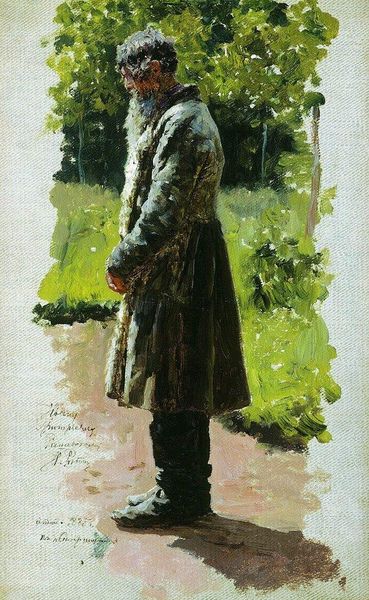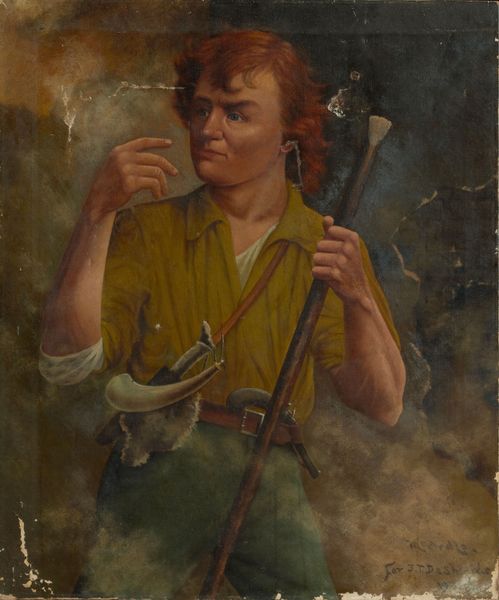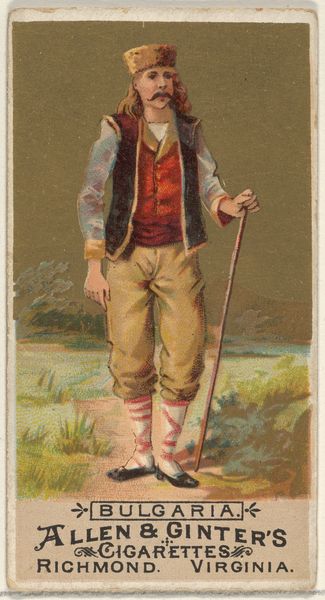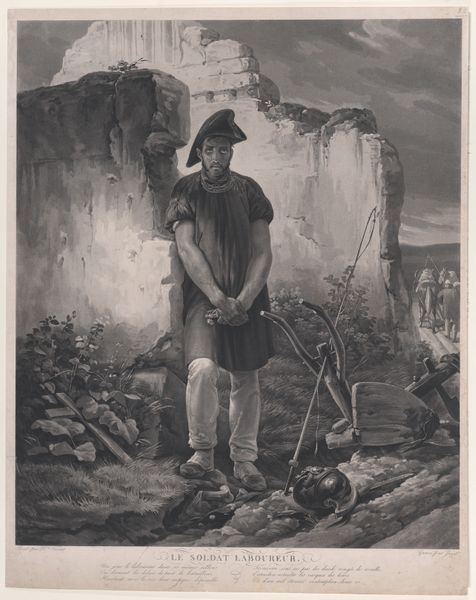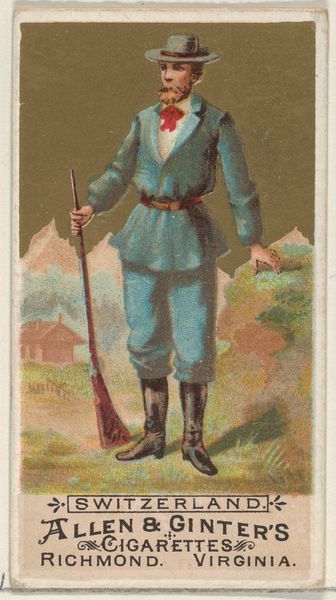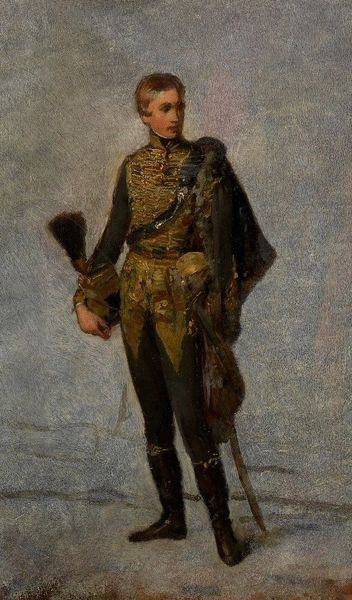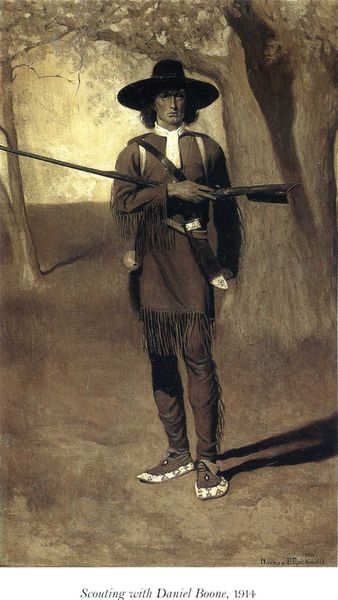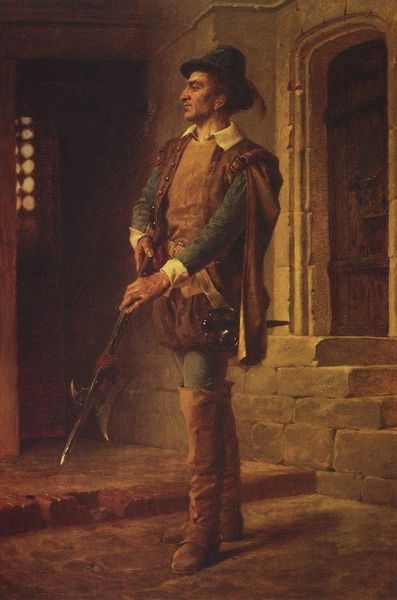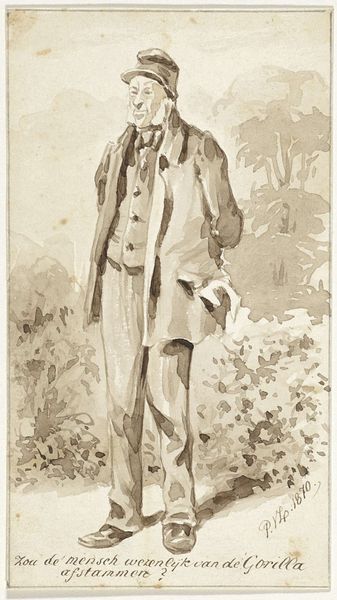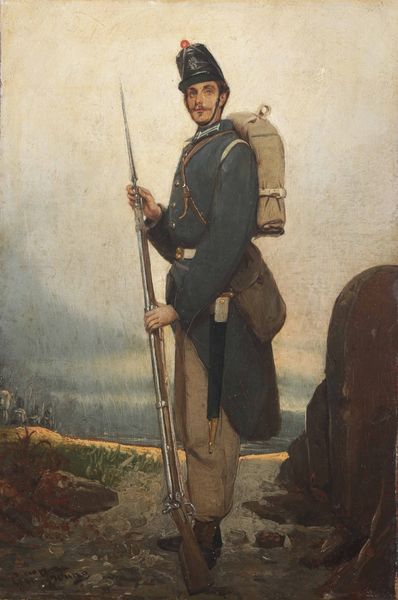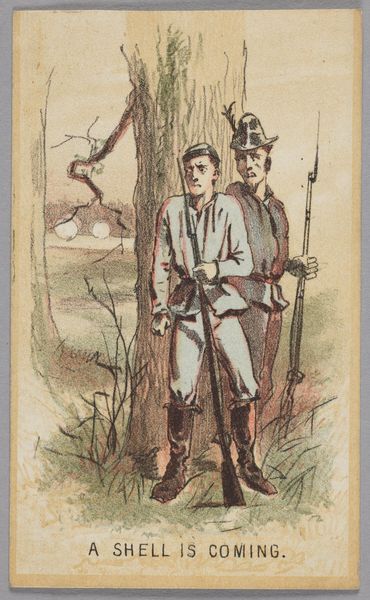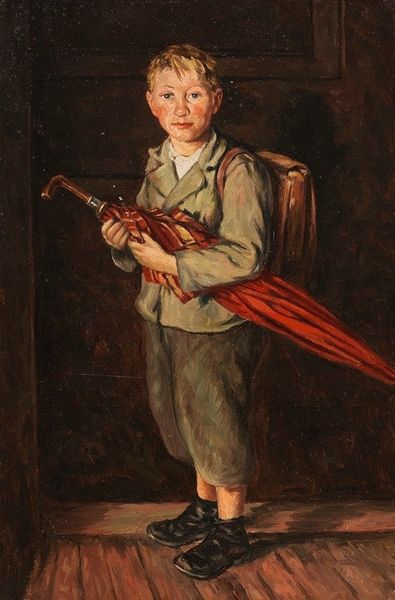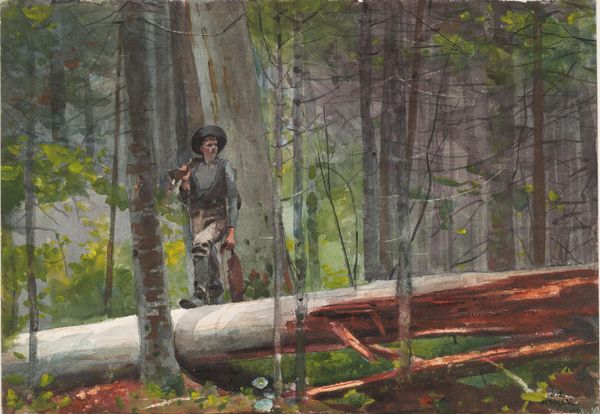
painting, oil-paint
#
portrait
#
painting
#
oil-paint
#
landscape
#
genre-painting
#
history-painting
#
academic-art
#
realism
Copyright: Public domain
Curator: Here we have William Henry Huddle's 1889 oil painting, "Davy Crockett." Editor: It’s interesting… the light feels quite theatrical, almost romanticized. Is it meant to be Crocket himself, or a performer? Curator: Huddle likely intended to create a symbolic representation of the man and the myth that had taken shape around Crockett by this point. Huddle produced a number of portraits of notable figures. Editor: What’s fascinating to me is this tension between the realism promised by Huddle’s Academic style, and the narrative itself. How do we reconcile the almost saintly, untouched depiction here, versus the violence enacted in the name of so-called “manifest destiny”? Curator: That tension between ideal and reality speaks directly to the historical role of such paintings, and history painting more generally. This portrayal omits much about Crockett's actions and is presented within the accepted historical context. The aim, perhaps, was to perpetuate the myth, bolstering a specific national identity. Editor: Yes, and this ties directly into the mythologizing of figures like Crockett within dominant narratives that erase the experiences and perspectives of Native populations. Is it possible to view a painting like this without reckoning with that deeply problematic legacy? How do we invite critique without cancelling all value or turning away completely? Curator: Precisely, the very display of this painting in a museum setting becomes part of that ongoing dialogue. Do we valorize the figure, or interrogate the myth? These are important questions that artworks like this force us to confront, if only to better understand both art and society. Editor: It underscores the complexities inherent in analyzing historical artworks; appreciating artistic skill while acknowledging the social, political, and sometimes very painful contexts in which they were created and subsequently received. It forces us to recognize that even seemingly straightforward portraiture is laden with loaded meaning. Curator: Absolutely. Considering these images allows us to investigate these figures anew. Editor: Ultimately, reflecting on how narratives, identities, and even landscapes were constructed –and by whom – offers pathways for more inclusive and accurate understanding of our past.
Comments
No comments
Be the first to comment and join the conversation on the ultimate creative platform.
